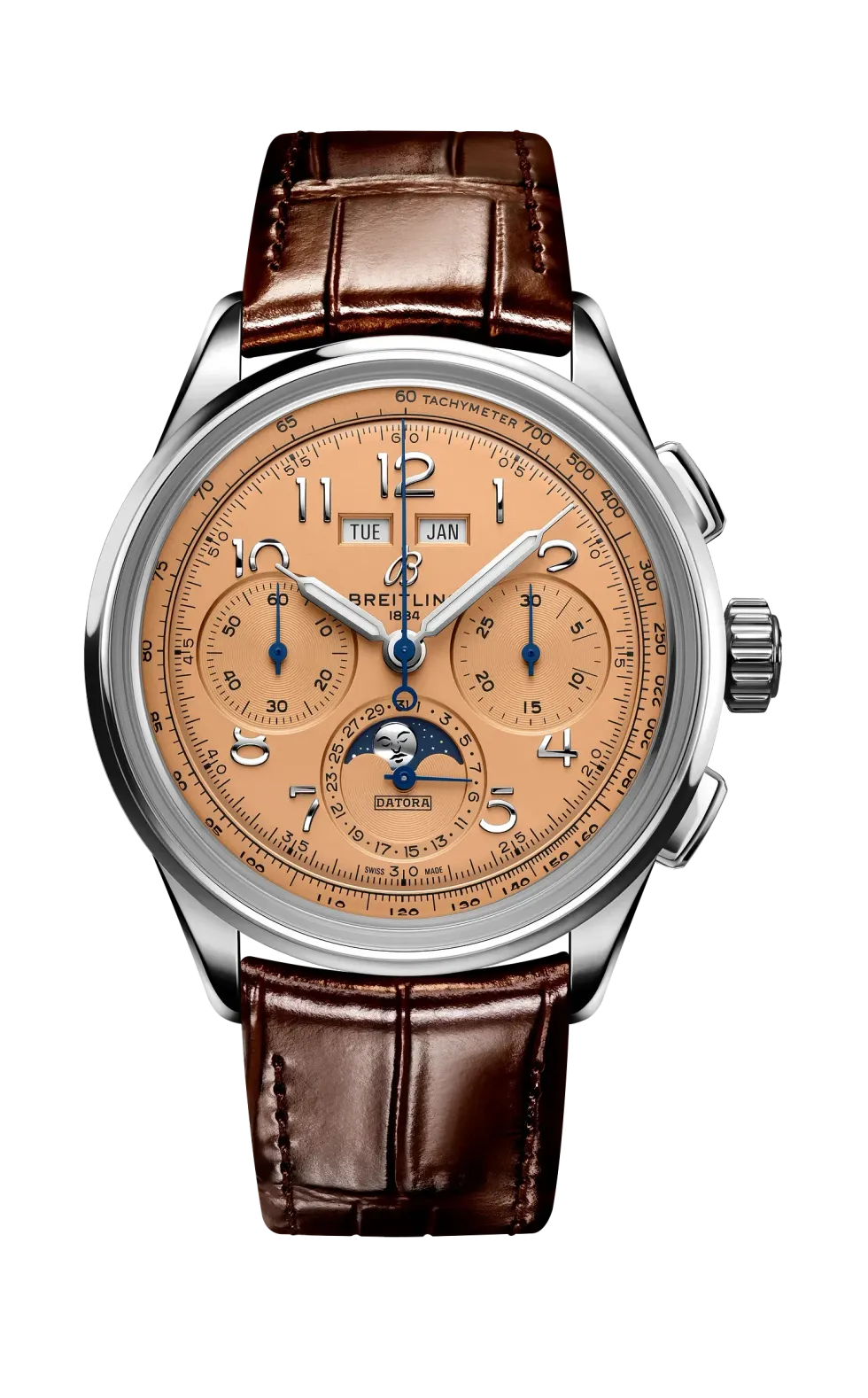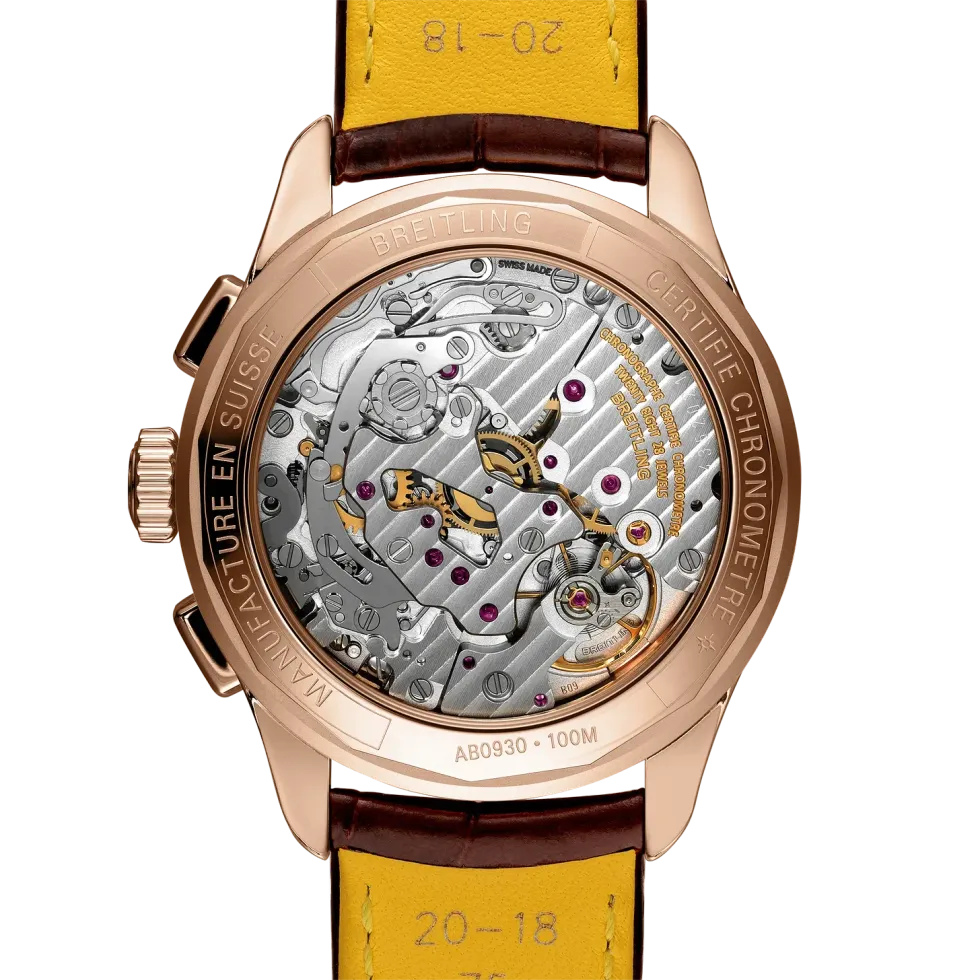
Image Courtesy of Breitling

When people think of NFTs, their minds go to costly digital images, often purchased by people with more money than sense. Paying hundreds of thousands of dollars for artistically dubious pixels of jaded primates might not be a sound fiscal plan, but the underlying technology is exciting. Blockchain ownership can transform contracts, logistics and shipping, health records, and data security.
Luxury watch brands are taking notice and pivoting to integrate this technology. The industry had a dramatic resurgence in the last few years and is predicted to achieve revenues of $48.3 billion in 2023. A few key players dominate sales: Rolex, the Swatch Group, which owns Omega and Longines along with a dozen other brands, and Richemont, which includes Panerai, Cartier, IWC, and Jaeger Le Coultre, account for over 60% of sales.
Watch companies have been slow to adopt new technology in the past and primarily utilize well-established sales networks through authorized dealers rather than online sales. Watches are a unique industry in which customers often buy and sell on the secondary market and can wear a well-maintained timepiece for decades.
Breitling decided to zag and embrace new technology, giving digital ownership tokens with all new watches sold. This is a significant milestone in the history of NFTs. Major brands are starting to utilize these decentralized ownership technologies for real-world applications. This could transform industries and go a long way toward legitimizing blockchain tech in the minds of normal consumers, outside the world of crypto.
Being able to track ownership, prove authenticity, easily see service records, and know whether an item is stolen is exceptionally beneficial for buyers. Breitling was the first luxury brand to utilize these blockchain records when it launched the digital passport service with every watch sold starting in 2020. The company uses the decentralized Arianee protocol, developed by a French company specializing in creating NFTs for luxury products.

Even though Breitling was the first, other companies recognize the potential and are jumping in. According to Arianee’s website, it has partnered with Panerai and the independent, ultra-high luxury brand Audemars Piguet. While their NFT programs aren’t live, these companies have filed patent applications with the U.S. Patent Office and the European Union Intellectual Property Office around digital ownership technology.
Moët Hennessy Louis Vuitton, commonly known as LVMH, the $400 billion luxury fashion conglomerate that includes Givenchy, Tiffany & Co., Fendi, and Christian Dior, is launching its version, partnering with Microsoft and Consensys with an Ethereum-based service. Proving authenticity could be a game-changer for an industry trying to stay ahead of increasingly sophisticated counterfeit operations.
Luxury brands can also leverage NFTs to engage with their customers in novel ways. They can offer exclusive digital experiences, virtual events, or access to limited edition products through NFT ownership. This fosters a deeper connection between the brand and its customers, driving loyalty and increasing brand value.
I sat down with Breitling’s chief technology officer, Antonio Carriero, to discuss NFTs, how this tech has transformed the company's supply chain, and the future of luxury goods.
Return: What was the genesis of this idea?
Antonio Carriero: I think the value of technology is empowering the consumer to reach the first step on a journey. Blockchain with NFT is a medium between the brand and the customer; if you use it, we enroll a customer anonymously. You can be part of the journey with the brand. And, of course, the objective, in the end, is to get closer to the customer. And a watch has a high chance of being sold again. So it's very important that we can make a place where nobody can modify the real information about the watch to safeguard the new buyer's interests. It provides a level of security in the transfer of the property.
Return: How does the process work?
Antonio Carriero: You have your wallet and have a simple one-click transaction to transfer the watch's ownership. You have to pick the person or the recipient of the transfer selected by an email address or telephone number. The idea was to build a technology capability with zero friction that is simple and very easy to use.
Return: How important will these blockchain technologies be in the future of luxury goods?
Antonio Carriero: The value of the NFT is the physical product. The NFT is a representation of the physical product. This will add to the economy of buying and selling these watches. The NFT is a key to enter the space of a luxury ecosystem.
Return: Watch theft seems to be on the rise around the world. How does this technology address that problem?
Antonio Carriero: I see two benefits. If I’m a buyer of a watch, I know I’m getting a certification digitally embedded in the blockchain. By checking this certification, I can know whether it’s stolen, and I can pull out of the transaction. If your watch is stolen or you lost it, with what is embedded in the wallet you can immediately make a claim to your insurance, creating much less complexity.

Return: Will this technology become the industry standard for luxury goods?
Antonio Carriero: Yes, I think so. As soon as you master the technology and the integration, you scale up. This will become a new normality not only for watches or jewelry but any high-value product with a second or third life. It’s important to say from a cost perspective, the NFT is totally marginal, so scaling the technology is just a question of connecting the pieces from a tech perspective.
Return: What are some of the logistical advantages for a company implementing NFTs?
Antonio Carriero: This has unified how we track and trace our product in the entire value chain. So one QR code is sent and encodes the capability, product, reference, serial number, and security level. And the setup is very simple; the partner is directly managing the transition from one state to the other. This is your level of efficiency, so any time, at any point in time, you have full visibility of where each one of our products is in the trade. So from a brand perspective, this is critical information. It’s critical that you build an ecosystem of intelligent technology, because we live in a technology and digital world, even if we are a physical product, to be able to keep open this communication channel and to keep this relationship with the consumer.
- YouTube youtu.be